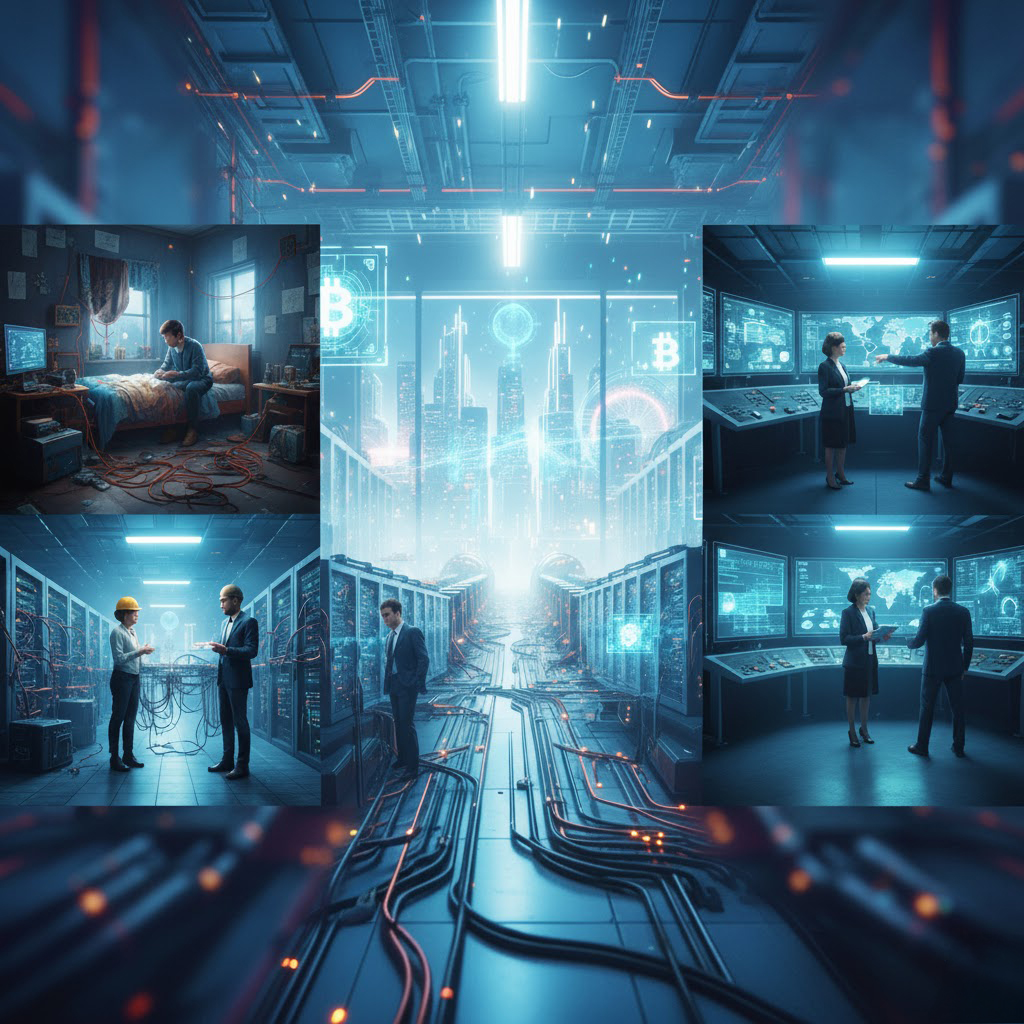An inside look at how mining has evolved — who’s still winning, what’s changed, and what it takes to stay profitable in the new era of digital gold.
Introduction
Crypto mining has always been the engine room of digital currencies — where computation meets creation. But as we move deeper into 2025, the mining landscape looks drastically different from the golden years of easy Bitcoin gains. Rising energy prices, tougher network difficulty, and halving events have reshaped the game. The big question now: is crypto mining still profitable in 2025?
The answer isn’t black and white. Mining can still deliver strong returns — but only for those who operate smart, scale efficiently, and understand that this is no longer a hobbyist’s playground. It’s a high-stakes business where margins are thin, precision is everything, and the future favors those who innovate.
Understanding the Mining Shift
Mining isn’t just about earning coins — it’s about securing networks and maintaining decentralization. In 2025, that mission remains, but the economics have evolved.

- Competition has intensified as industrial-scale mining farms dominate.
- Energy costs are the deal-breaker — cheap, renewable, or surplus power is now the difference between profit and loss.
- Hardware performance determines survival. Outdated rigs are no longer viable, and efficiency per watt is the new gold standard.
- Strategic adaptation is key: modern miners blend crypto with AI computation, cloud hosting, or even carbon-neutral operations.
Mining in 2025 is about strategy, scale, and sustainability — not speculation.
Core Components of Profitability
To understand what makes mining profitable today, you need to break down the elements that drive success:
1. Hardware Efficiency
Modern ASICs and GPUs now deliver exponentially more power at lower energy consumption. Those investing in next-gen hardware are seeing payback periods shorten, while older rigs struggle to stay relevant.
2. Energy Costs
Electricity is the single largest operational expense. Regions with low-cost, renewable, or surplus energy — from hydro to geothermal — have become mining hubs.
3. Network Difficulty & Hash-Rate
As networks grow, mining difficulty adjusts upward, squeezing smaller players. This dynamic makes constant reinvestment in efficient equipment crucial.
4. Coin Prices & Block Rewards
Profitability rises with token value and falls with halvings. In 2025, miners rely more on transaction fees to maintain revenue streams, balancing market volatility with long-term vision.
The Business Behind the Blocks
Crypto mining has matured into a professional industry. The successful operators today are no longer bedroom miners — they’re infrastructure builders and energy strategists.

- Industrial farms operate across continents, co-locating near renewable grids or stranded power sources.
- Mining pools distribute rewards more predictably and minimize variance for participants.
- Hosting providers now rent out hash-rate or physical space, letting smaller investors participate in large-scale operations.
- Dual-purpose facilities increasingly blend mining with data-center services or AI computing, optimizing uptime and cash flow.
Mining has evolved from a tech experiment into a global digital-infrastructure economy.
Profitability in 2025
Mining is still profitable — but only under the right conditions.
- Low electricity cost (typically below $0.05 USD/kWh)
- High-efficiency hardware with optimized cooling and uptime
- Professional-grade operation and maintenance
- Stable regulatory environment
- Smart reinvestment strategy to upgrade hardware regularly
Under optimal conditions, a high-performance miner can still generate around $300–$500 per month in net profit, depending on region, power rate, and network difficulty. Those operating in high-cost environments, however, often break even or operate at a loss.
Mining today isn’t about luck — it’s about logistics, math, and management.
Innovation & Sustainability
The miners of 2025 are redefining what “profitable” means. Beyond raw earnings, the focus has shifted to energy innovation and sustainable integration:

- Transition to renewable power sources, such as solar, hydro, or wind.
- Utilization of waste heat recovery, powering greenhouses or heating systems.
- Integration with AI and cloud computing, diversifying revenue streams.
- ESG alignment to attract institutional investment and maintain long-term credibility.
This new wave of eco-minded mining operations is proving that profitability and responsibility can coexist — and that innovation is the ultimate edge.
Challenges & Realities
Despite opportunity, mining remains a volatile pursuit:
- Energy price spikes can instantly crush margins.
- Hardware depreciates rapidly as new generations launch.
- Network difficulty escalates with every new entrant.
- Regulations shift frequently, especially regarding carbon use.
- Crypto market volatility affects long-term ROI calculations.
In short: profitability in 2025 belongs to those who treat mining as a serious business, not a speculative gamble.
The Bigger Picture
Crypto mining’s evolution mirrors the maturity of the digital-asset world itself. What was once a decentralized grassroots effort has become a sophisticated global industry — blending technology, energy, and finance.
Its legacy extends beyond coins: mining now sits at the intersection of energy innovation and digital infrastructure, powering not only blockchains but the very idea of decentralized computation.
Whether or not mining remains profitable for you depends on one simple equation — how efficiently you can turn energy into trust.
Final Take
So, is crypto mining still profitable in 2025?
Yes — but not for everyone.

The golden era of easy gains is gone. What remains is a refined, data-driven, efficiency-obsessed industry where success depends on strategy, sustainability, and scale. Those who adapt will continue to mine profits — and power the next generation of decentralized systems.
MarketMind Insight: Mining isn’t dying — it’s evolving. In 2025, it’s not just about making money. It’s about mastering energy, efficiency, and endurance in a digital gold rush that never sleeps.

Leave a Reply